NEONATOLOGY ON THE WEB
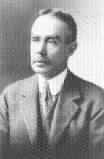 |
A Study of the Caloric Needs
of Premature Infants
By John Lovett Morse, A.M., M.D.,
Instructor in Diseases of Children, Harvard Medical School;
Assistant Physician at the Children's Hospital and at the Infants'
Hospital, Boston.
American Journal of the Medical Sciences 127:463-477,
1904.
|
Vierordt and Rubner were the first to investigate the metabolism
of the infant. Camerer, in 1889, collected a large amount of material
and endeavored to determine in heat units the nutritive needs of
infants at various ages. He calculated the caloric contents of breast
milk based on Pfeiffer's analyses. A considerable number of
observation have been made by different men since that time. Each one
has, as a rule, made but one or two. Most of them have been made on
breast-fed infants; a few on artificially fed. Some of them have
extended over the first year, but most of them only over short
periods of time. Czerny and Keller, in their hand-book published in
1902, have reviewed the work of previous observers in detail and
added a considerable amount of material of their own. Since then,
Beuthner has studied three cases, one of which was fed entirely on
breast milk, the others partly on breast milk and partly on
artificial food. In 1902 he summed up the cases fed on breast milk
hitherto studied in private practice. He included the cases of
Ahlfeldt (2), Camerer (4), Feer (3), Hähner (4), Laure (1),
Pfeiffer (2), Weigelin (1), Oppenheimer (1), and his own (3). The
average number of calories per kilo taken daily was as follows:
|
1 week
|
59 calories.
|
|
2 weeks
|
100 calories.
|
|
4 weeks
|
106 calories.
|
|
7 weeks
|
114 calories.
|
|
10 weeks
|
104 calories.
|
|
14 weeks
|
96 calories.
|
|
17 weeks
|
91 calories.
|
|
20 weeks
|
85 calories.
|
In all these experiments the caloric worth of the nourishment was
reckoned on the usual basis that 1 gram of albumin equals 4.1
calories, 1 gram of carbohydrates 4.1 calories, and 1 gram of fat 9.3
calories. There must be some doubt, of course, whether these figures,
which were calculated expressly for the mixed food of a man, can be
used in estimating the nutritive value of milk for an infant. In the
mixed diet of the adult about 8 per cent. of the total worth is lost
in the feces. Czerny and Keller have shown that this loss is much
less in healthy children fed on milk. All these observers estimated
the caloric value of human milk at 650 calories per liter, and of
cow's milk at 670 calories per litre. This standard for the caloric
contents of woman's milk is based on an estimated composition.
Everyone knows that the milk of different women varies, especially in
its fat contents, and that the milk of the same woman varies from day
to day and from nursing to nursing. These physiological variations in
the composition of woman's milk make an average caloric worth
elusory. This average figure is still more elusory when we realize
that the accepted caloric value of 650 calories per litre is based on
the average of the analyses of the milk of two women, one of whom had
a milk poor in fat, the other a milk rich in fat. Schlossman,
moreover, obtained as the result of 218 analyses of woman's milk an
average value of 782 calories per litre. He used this figure as the
basis of his investigations. It is evident that the figures of
previous observers will be materially altered if this caloric value
is accepted. It is evident, therefore, that figures based on such an
average caloric value per litre of milk cannot be of great value.
Heubner draws the following conclusions from the cases of Feer,
Finkelstein, Camerer, and others: An alimentation whose quotient of
energy does not exceed 70 calories is insufficient for an infant,
even if breast-fed, to prosper on, at least during the first six
months. In order to get a normal gain a quotient of energy of at
least 100 calories with natural alimentation and of 120 with
artificial alimentation is necessary. After the sixth month a given
quotient of energy gives better results as regards gain in weight
than in the first six months; that is to say, in the second half of
the first year the organism works more economically than at the
beginning of life. In order to obtain the same results a larger
quotient of energy is required in artificial alimentation than in
natural alimentation. He believes that the less favorable results of
artificial food are due to the greater work which cow's milk imposes
on the digestive organs. This work absorbs a certain number of
calories which normally are made use of by the organism. Other
writers have attributed the difference in the results to the
difference in the casein of woman's and cow's milk.
In attempting to determine how much nourishment a healthy suckling
needs it is of the greatest importance to determine by what standard
the amount of this need is to be measured. In adults under
physiological conditions enough nourishment must be taken to keep up
the weight. This is not sufficient for infants in the first year, who
must take enough nourishment to make possible a gain in body
substance. This gain must also be of a certain definite kind. A gain
in weight alone is not sufficient and cannot be accepted as a
reliable guide to the the worth of the food. At present we are not in
a position to say what substances and what quantities of these
substances are necessary to meet the loss of the body and to make
possible a normal gain in development. We do know that the infant
must have albumin, but that it can thrive on a comparatively small
amount. Whether fat or carbohydrates can be omitted without causing
harm to the organism has not yet been determined in the healthy
infant. Single observations on sick children point to an affirmative
answer.
The number of experiments which have thus far been made in the
metabolism of infancy are too small to justify any general and
sweeping conclusions. It must be remembered, moreover, that figures
based on an average caloric contents of milk show nothing more than
does the quantity of the nourishment. A study of the curve of
nourishment in healthy infants shows in the beginning for a longer or
shorter time a daily increase in the amount of milk taken, which
increase, nevertheless, steadily diminishes as the infant becomes
older. In the first weeks of life, in breast-fed children, the amount
of nourishment taken is about one-fifth of the body weight. It
gradually diminishes and from the middle of the first to the middle
of the second quarter-year remains between one-sixth and one-seventh,
and at the end of the first half-year is about one-eighth of the body
weight.
The variations in the rate of development of children who wake the
same quantity of woman's milk may be largely explained by the
differences in the chemical composition of the milk which they
receive. Moreover, as the result of the variations in the area of the
surface of the body different percentages of the energy taken in are
given off in the form of heat. Finally, it is possible that the
differences in the composition of the body substance in different
children may play a part.
Czerny and Keller think that the figures which have been obtained
by averaging the number of calories taken by the various infants
which have been studied are larger than the nutritive need of a
healthy infant. One of the infants studied in their clinic shows that
Heubner's assumption that an intake of less than 70 calories per
kilo, even in breast-fed infants, is not consistent with a normal
increase in weight for the first half-year is erroneous. In this case
less than 70 calories per kilo were taken for six weeks. The increase
in weight was, nevertheless, 15 grams daily. They also give various
observations which show that in breast-fed infants less than 100
calories per kilo is completely sufficient for a satisfactory
development.
They do not agree with Heubner's assertion that with an artificial
food satisfactory development is impossible on less than 120 calories
per kilo daily. Heubner based his opinion on Finkelstein's study of a
healthy infant. Another case of Finkelstein's which was also on an
artificial food did well and gained regularly on much less than 120
calories per kilo, taking an average of 103.6 calories per kilo in
the first quarter-year, 102.5 in the second quarter, and 99 in the
third quarter. They consider that the quantity of milk necessary to
give 120 calories per kilo of body weight is overfeeding.
They do not agree with Heubner that a larger caloric worth of
cow's milk is necessary than of breast milk. They state that
metabolism experiments have thrown but little light on the
comparative nutritive worth of woman's and cow's milk for healthy
infants. (They quote Rubner and Heubner's experiments.) These show no
important differences as regards the utilization of the constituents
of cow's and woman's milk, the physiological results being almost the
same in both cases. They assert that the caloric need of a healthy
infant is no greater when nourished on cow's milk than on human milk,
and that the assumption that when cow's milk is taken more of the
energy ingested is used up by the digestive tract than when breast
milk is taken is therefore unwarranted.
It is a well-known fact that small bodies have a greater surface
area in proportion to their mass than have large bodies. The loss of
heat is therefore relatively greater in proportion to the weight in
small than in large bodies. Rubner first recognized the importance of
this fact in relation to tissue changes in living animals, and
demonstrated that the tissue changes are proportional at every age to
the size of the surface of the body. Young individuals, therefore,
show a relatively greater destruction of material than older, and
hence require relatively larger amounts of nourishment. This
difference in size explains to a certain extent, but not entirely,
the far greater number of calories per kilo required by infants than
by adults in order to thrive. The rest of the infant's greater
requirement is account for by the fact that the infant uses up a
considerable amount of energy in growth.
Reasoning on the same lines, premature infants, being so small,
should require even more calories per kilo than full-term infants in
order to thrive. Heubner compared an artificially-fed premature
infant studied by Finkelstein with a breast-fed full-term infant
studied by Feer and another artificially-fed full-term infant studied
by Finkelstein, and found that it did not do so well as the others.
Its gain was only one-half as rapid as that of the artificially-fed
infant, although after the sixth week it took as many or more
calories per kilo of weight. During the first three weeks it took an
average of 25 calories per kilo and made no gain, while in the two
weeks following it took between 50 and 90 calories per kilo and made
a slight gain. During the next four weeks it took an average of 104
calories per kilo, and from the tenth to the seventeenth weeks
inclusive 135 calories per kilo. It averaged 120 calories per kilo
from the eighteenth to the thirty-ninth week inclusive, and 107
calories per kilo from the fortieth to the fifty-second week. During
the first quarter of the year it made an average daily gain of 12
grams, in the second one of 18 grams, in the third one of 15 grams,
and in the last one of 2 grams. Its initial weight was 1350 grams,
while at the end of the year its weight was 5750 grams. It was fed on
peptonized milk.
Heubner explains the smaller gain on a relatively equal or greater
intake of energy on the principles detailed above. Another possible
reason why premature infants might be expected to require a
relatively greater intake of energy lies in the comparatively
undeveloped condition of the digestive power which results in a less
complete utilization of the food ingested. No proof of this latter
assumption is, however, at hand.
Beuthner studied an infant six or seven weeks premature for
twenty-five weeks. It was entirely breast-fed for seven weeks, and
was then given in addition cow's milk diluted with a cereal decoction
to the end of the twenty-fifth week, at which time the observation
was discontinued. It weighed 2400 grams at birth and 6800 grams at
the end of the twenty-fifth week, having made an average daily gain
of 25 grams. During the first quarter it took a daily average of
113.1 calories per kilo, and during the second quarter one of 92.2
calories per kilo.
Schlossmann studied an infant four or five weeks premature from
the twelfth to the eightieth day. It was breast-fed. It weighed 2230
grams on the twelfth day and 3310 grams on the eightieth day, having
made an average daily gain of 16 grams. It took an average of 119
calories per kilo daily and made an average daily gain of 5.5 grams
per kilo.
These cases, as far as they go, confirm Heubner's assumption that
premature infants require a relatively greater amount of nourishment
than full-term infants, and that a larger number of calories is
necessary in a substitute food than in breast milk. The differences
are so slight, however, that but little importance can be attached to
them.
During the past winter I have studied from the point of view of
the quotient of energy the feeding of six premature infants, five of
them at the Infants' Hospital and one in private practice. All were
fed on modified cow's milk of definite percentages prepared at the
Walker-Gordon Laboratory. The composition of the food being known, it
was easy to calculate its caloric contents. It is possible that the
composition of the food may not always have been exactly what it was
supposed to be. Edsall's recent analyses of milk prepared at the
Walker-Gordon Laboratory show, however, that these variations must
have been very small, certainly not large enough to have vitiated to
any extent the value of the results. They certainly must be more
accurate than those obtained on the basis of the average analyses of
woman's and cow's milk. The amount of food taken at each feeding was
carefully measured. The caloric value was calculated on the basis
that 1 gram of sugar or proteids equals 4.1 calories, and 1 gram of
fat 9.3 calories.
Unfortunately all the babies did not do uninterruptedly well. One
died when twenty-seven days old, of a congenital cardiac lesion
complicated by atelectasis of the lungs. Its digestion had been good
from the first, however, and it had shown no signs of its cardiac or
pulmonary lesions until its sudden collapse and death. One left the
hospital when three weeks old, not gaining, but doing very well in
other ways. Two did very well and gained steadily. One gained
steadily for ten weeks and another for eight weeks, after which both
had more or less disturbance of digestion and did not gain regularly,
sometimes gaining and sometimes losing. Most of them showed a
tendency to have too many dejections. These were, as a rule, of good
color and odor, but were rather loose and contained fine curds. They
did not seem to interfere with the gain in weight, but suggested that
a portion of the food was not properly utilized. The histories with
charts are given in more detail below:
Ruth C. was brought to the Infants' Hospital February 1, 1903,
when six hours old. She was thought to be two months premature. The
physical examination showed nothing abnormal. her cry was strong. Her
weight was 2500 grams. Her temperature was about normal during the
whole of her stay in the hospital. She always took her food well and
never vomited. She had from one to four movements daily, usually one
or two, which were generally a little green and contained a few
curds. The movements were not as good on February 12th. She was given
calomel and her food was cut down for forty-eight hours. She was
discharged February 22d at her parents' request. She had been taken
out of the incubator and was doing well. Her weight was 2440 grams.
James McL. was admitted to the Infants' Hospital April 24, 1903,
when twenty-four hours old. He was supposed to be two months
premature. He was feeble and had a feeble cry. His extremities were
cool. The heart sounds were normal, the rate slow. No further
examination was made. His weight was 1170 grams. He was at once put
in the incubator. His temperature remained subnormal until May 9th,
after which it was irregular, but usually elevated. He took his food
well from a Breck feeder, but was not able to take an ordinary
nipple. He regurgitated a little during the last two or three days.
During the first nine days he had one movement daily which, after the
meconium was passed, was well digested. After that time he had from
two to six movements daily, usually well digested. They were well
digested on the day of his death. He seemed to be doing finely until
the weather suddenly became hot. He immediately began to fail and
died May 20th. His weight on the day of his death was 1040 grams. The
autopsy showed that both the foramen ovale and the ductus arteriosus
were open and that portions of both lungs had never expanded.
Charles S. was first seen on February 3, 1903 when twelve hours
old. He was at least four weeks premature. Physical examination
showed nothing abnormal. He acted fairly vigorously and had a strong
cry. His weight was 1530 grams. He was put in a padded crib. When
five days old he suddenly collapsed and almost died. After this he
was feeble for a considerable time. At first he had to be fed with a
Breck feeder and sometimes with a dropper. He usually took his food
fairly well, but showed a tendency to spit it up if he were at all
overfed. The food supply had to be cut down several times temporarily
on this account. There was a slight tendency to constipation, but the
movements were, as a rule, well digested. He had a good deal of
colic. The observation was stopped on May 19th, when he was fifteen
weeks old, because the family were going into the country for the
summer, where they had to use a home modification of milk. His weight
at that time was 2620 grams, making an average daily gain of a little
over 10 grams. He was doing well at that time and has continued to do
so.
Pauline J. was admitted to the Infants' Hospital March 20, 1903,
when two weeks old. She was born at the Lying-in Hospital and had
been in an incubator there before she came to the Infants' Hospital.
She was supposed to have been about two months premature. She was
small, emaciated, and markedly jaundiced. The fontanelle was
depressed, and the cranial bones overlapped. The physical examination
showed nothing else abnormal. Her cry was strong. Her weight was 1180
grams. She was kept in an incubator until April 25th, and would have
been kept there longer if the incubator had not been needed for
another baby. She was kept in a padded crib until the middle of June.
She was first bathed and dressed May 18th. Her temperature was
usually normal or a little above normal. She was fed partly with a
dropper and partly with a Breck feeder until March 24th, then with a
Breck feeder until April 23d, after which she took the nipple. She
usually took her food fairly well. She did not vomit at all until the
second week in May, after which she at times vomited a good deal and
at others not at all. On this account the food supply had to be cut
down on several occasions and at one time milk was omitted entirely.
After May 1st there was a slight tendency to looseness of the bowels.
At times she had as many as seven or eight in twenty-four hours.
These were either yellowish or yellowish-green, with fine curds and
occasionally a little mucus. The movements, however, on the whole,
were not bad. They certainly did not interfere with her general
condition or prevent her from gaining until June 1st, when she was
twelve weeks old. She then weighed 1720 grams, having made an average
daily gain of 8 grams. She did not do as well after the hot weather
began in June, although she developed no new symptoms, did not vomit
any more or have a greater number of movements. She was discharged
June 29th, when sixteen and one-half weeks old, because the hospital
was closing for the summer. At that time she was not doing very well,
was having many movements and vomiting a little. Her weight was 1600
grams. She was evidently sick after June 1st, and hence her records
from this date on can hardly be properly used in estimating the
caloric need of a normal infant.
Emanuel B. was admitted to the Infants' Hospital January 17, 1903,
when two weeks old. He was supposed to be about two months premature.
He had spent the first two weeks in an incubator at the Lying-in
Hospital. While there he vomited every few days and was constipated.
The physical exam showed nothing abnormal. His weight was 1370 grams.
He was put in a padded crib, dressed March 5th, bathed March 23d and
taken out of the padded crib April 26th. His temperature was
subnormal during the first two weeks, but after that was normal. He
always took his food well and very seldom vomited, at one time not
for ten weeks. He had from two to five movements daily, which were
usually yellow but sometimes green, and often contained small curds
and sometimes a little mucus. On the whole the movements were mostly
satisfactory except that they were increased in number. He was doing
fairly well when he left the hospital, May 19th. He was then nineteen
weeks old and weighed 2640 grams. He had had a little fever, had not
taken his food quite as well, and had not gained during his last ten
days in the hospital. Nothing definitely wrong was made out, however.
It is hardly fair, nevertheless, to consider him a well baby after
May 9th. The last ten days should not be counted in drawing
conclusions. From the fifteenth to the one hundred and twenty-fifth
day he made an average daily gain of a little over 12 grams.
James J. was admitted to the Infants' Hospital January 22, 1903,
when fourteen days old. He was supposed to have been one month
premature. He spent the first two weeks in the Lying-in Hospital. He
was thin and the anterior fontanelle was somewhat depressed. The
physical examination was otherwise negative. His weight was 1820
grams. He was put in a padded crib. He had to be fed with a Breck
feeder until March 10th. He was bathed March 13th and taken out of
the padded crib April 26th. His temperature was subnormal for nearly
a month, after which it was usually about normal. He was never
vigorous and never took his food very well. He did not vomit until
the middle of May, after which he vomited occasionally. He had from
two to four movements daily up to about the middle of March, after
which he had too many movements, often as many as six or eight in
twenty-four hours. After April 1st, when he weighed 2430 grams, any
attempt to increase the amount of strength of the food caused an
increase in the number of movements. These movements were yellowish,
or yellowish-green, and contained fine curds. On several occasions
the food had to be cut down decidedly, and once milk was entirely
omitted. During the last five weeks he had a sore mouth and tongue
from time to time. He was much depressed by the first hot weather,
which occurred in the middle of May. It was at that time that the
milk had to be stopped. He never did as well afterward. He was
discharged June 18th in fair condition and gained in weight. His
mouth was well. He was taking his food rather better, was vomiting
about once a day and having from three to four movements daily, some
of which were normal and some of were green and contained curds. His
weight was 2410 grams. The only period in which he did almost
uninterruptedly well was from the thirty-second to the eighty-third
day. During this time he made an average daily gain of more than 15
grams. His subsequent record is of chief interest in showing the
rapid fall in weight when the nourishment was cut down, with a
correspondingly rapid rise when it was again increased. It is worthy
of study in this connection.
Further analysis of this table shows that these cases took from
the fifteenth to the ninetieth day, that is, during the first quarter
after the first two weeks, a daily average of 122.7 calories per kilo
of weight, and that from the ninetieth to the one hundred and
twenty-fifth day, that is, during the early part of the second
quarter, a daily average of 142.9 calories per kilo of weight.
In the first few weeks these infants took less than the average
given in Beuthner's table. As they did not gain at first it is
probable, however, that in order to avoid upsetting the digestion
they were somewhat underfed. These figures justify Heubner's
assertions that not less than 70 calories per kilo are necessary
during the first six months, and that with artificial alimentation at
least 120 calories per kilo are necessary to get a normal gain. They
correspond fairly closely with the results obtained by other
observers in premature infants during the first three months,
Beuthner's infant having averaged 113.1 calories per kilo,
Schlossmann's 119 calories per kilo, and Finkelstein's 120 to 135
calories per kilo. In contradistinction to other figures they show a
progressive increase in the quotient of energy toward the end of the
first quarter and at the beginning of the second quarter. In spite of
the high quotient of energy these infants did not gain as rapidly as
the average normal full-term infant, thus confirming Heubner's
assumption that premature infants require a relatively greater amount
of nourishment than do full-term infants.
It is very difficult to draw any very satisfactory conclusions
from these figures. In some instances when two babies of the same age
were taking almost exactly the same relative amount of nourishment
one gained and the other lost. In other instances the baby taking the
smaller amount of nourishment gained while the other lost. For
example, between the fifteenth and twentieth days baby J. gained on
55.2 calories per kilo, while baby B. lost on 52.7 calories per kilo.
Between the twentieth and twenty-fifth days baby B. made a large gain
on 72.5 calories per kilo, while baby McL. just held his weight on
72.1 calories per kilo and baby J. lost on 70.3 calories. Between the
thirtieth and thirty-fifth days baby J. gained on 2.4 calories, while
baby S. lost on 98.5 calories. Between the fifty-fifth and sixtieth
days babies S. and J. gained on 133.9 calories and 138.6 calories
respectively, while baby B. lost on 137.2 calories.
In some cases in which two babies of the same age were taking
practically the same relative amounts of nourishment, one gained two
or three times as much as the other; for example, between the
fortieth and forty-fifth days baby J. took a daily average of 120
calories per kilo and made a daily gain of 11.4 grams per kilo, while
baby S. took 121 calories and gained only 3.1 grams per kilo.
Again, babies of the same age gained essentially the same amounts
on widely differing amounts of nourishment; for example, between the
seventieth and seventy-fifth days baby S. made an average daily gain
of 6.4 grams per kilo on 151 calories per kilo, while baby J. gained
6.3 grams on 126.1 calories.
In other instances one baby did better than another for a time,
and then a little later the second baby did better than the first;
for example, between the twentieth and twenty-fifth days baby B. took
72.5 calories per kilo and gained 13.1 grams per kilo daily, while
baby J. lost weight on 70.3 calories. Between the forty-fifth and
fiftieth days baby B. took 135 calories per kilo and made a daily
gain of 11.4 grams per kilo, while baby J. took 132 calories and
gained 11.8 grams. Between the eightieth and eighty-fifth days baby
B. took 157.2 calories and gained 6.2 grams, while baby J. took 156.5
calories and gained 8.4 grams.
Again, the same baby did not gain in proportion to the amount of
food taken; for example, baby J., between the fortieth and
forty-fifth days, took an average of 120 calories per kilo and made
an average daily gain of 11.4 grams per kilo; between the forty-fifth
and fiftieth days he took 132 calories and gained 11.8 grams; between
the fiftieth and fifty-fifth days, 152.3 calories with no gain;
between the fifty-fifth and sixtieth days, 156.2 calories with a gain
of 2 grams; between the sixtieth and sixty-fifth days, 158.6 calories
with a gain of 6.1 grams; between the sixty-fifth and seventieth
days, 170.3 calories with a gain of 12.6 grams, and between the
seventieth and seventy-fifth days, 180.6 calories with a gain of 9.2
grams.
The only conclusion which it seems possible to draw from these
contradictory figures is that the gain seemed to depend as much, or
more, on the digestion and metabolism of the given baby at the given
age as on the amount of the food, the age of the baby, or any
inherent differences in the individual babies.
Conclusion. The conclusion seems justified from these
figures that the caloric need of premature infants is relatively
greater than that of full-term infants. This greater need is due in
part to the small size and comparatively large surface area of
premature infants, which cause them to lose heat faster than do
larger, full-term infants, and partly to the incomplete development
of their digestive powers, on account of which they utilize a
relatively smaller proportion of the caloric value of the food
ingested. This conclusion emphasizes the importance of protecting
premature infants against loss of heat and of providing for them a
food which will throw the least work on the partially developed
digestive powers.
Bibliography
Beuthner. Jahrb. f. Kinderheilk., 1902, vol. lvi. 446.
Czerny and Keller. Des Kindes Ernährung,
Ernährungsstörungen u. Ernährungstherapie, 1902, Abth.
iii. u. iv.
Heubner. Zeitschr. f. Diätet. u. physik. Therap., 1901, vol.
v. 13.
Schlossmann. Archiv f. Kinderheilk., 1902, vol. xxxv. 339.
Figures
|
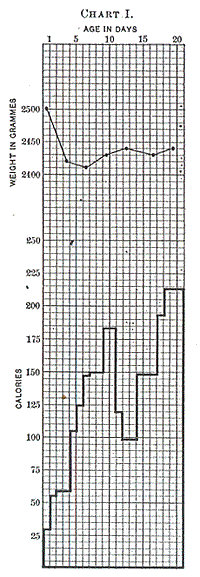
|
Chart 1.
|
|
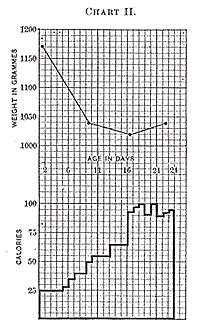
|
Chart 2.
|
|
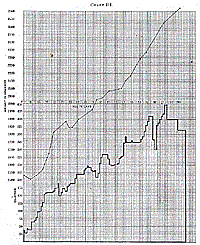
|
Chart 3.
|
|
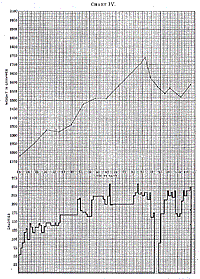
|
Chart 4.
|
|
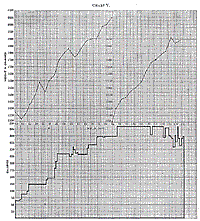
|
Chart 5.
|
|
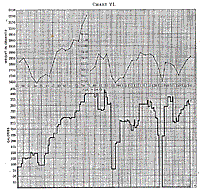
|
Chart 6.
|
|
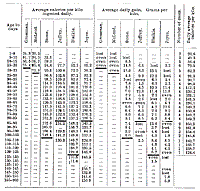
|
Table 1.
|
Created 2/19/2000 / Last modified 2/26/2000
Copyright © 2000 Neonatology on the Web / webmaster@neonatology.net







